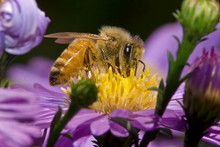 Loading... Please wait...
Loading... Please wait...- Home
- SEEDS
- SEED MIXES
- BUY PLANTS
- Info Request
-
Educational Videos
- Greenhouse Transplanting Demonstration
- Native Seed Cleaning demonstration at Ion Exchange Native Seed and Plant Nursery
- Attracting Butterflies
- Bidens - Bidens cernua Harvest Video
- Big Blue Stem Harvest
- Butterfly Milkweed Video
- Button Blazingstar - Liatris aspera Video
- Buttonbush - Cephalanthus occidentalis Video
- Canada Anemone - Anemone canadensis Harvest Video
- Cardinal Flower - Lobelia cardinalis Video
- Control Burn - Wildflower Field
- Cream Gentian - Gentiana flavida
- Culver's Root - Veronicastrum virginicum Video
- Cup Plant - Silphium perfoliatum Video
- Dormant Seeding | Planting
- Earthyman's Favorite Wildflowers Video
- Eco-Friendly Golf Course Seed Mix
- Floating Islands
- Fringed Loosestrife - Lysimachia ciliata Video
- Giant Yellow Hyssop - Agastache nepetoides Video
- Indiangrass - Sorghastrum nutans Video
- Iowa Prairie Partner Program
- Leadplant - Amorpha canescens (Potted) Video
- Meadow Blazingstar - Liatris ligulistylis
- Midland Shooting Stars - Dodecatheon meadii Video
- Native Plant Nursery Field Irrigation Experiment
- Nodding Onion - Allium cernuum Video
- Ohio spiderwort - Tradescantia ohiensis Video
- Old Man's Beard - Clematis virginiana blooms Video
- Oxeye Sunflower - Heliopsis helianthoides Video
- Prairie Spiderwort - Tradescantia bracteata
- Purple Coneflower - Echinacea purpurea Video
- Rain Garden or Water Garden Video
- Rattlesnake Master - Eryngium yuccifolium Video
- Riverbank Stabilization - Wetland Plants
- Rose Mallow - Hibiscus militaris Video
- Rosinweed - Silphium integrifolium Video
- Royal Catchfly - Silene regia
- Showy Tick Trefoil - Desmodium canadense Video
- Sneezeweed - Helenium autumnale Video
- Swamp Betony - Pedicularis lanceolata Video
- Swamp Milkweed - Asclepias incarnata Video
- Sweet Blackeyed Susan - Rudbeckia subtomentosa Video
- Tall Coreopsis - Coreopsis tripteris Video
- Urban Butterfly Garden
- Wild Bergamot - Monarda fistulosa Video
- Wild Geranium - Geranium maculatum Harvest
- Wild Goldenglow - Rudbeckia lanciniata Video
- Wild Petunia - Ruellia humilis Harvest Video
- Woodland Knotweed - Polygonum virginianum Video
- Yellow Coneflower - Ratibida pinnata Video
- Blog
- Resources
- Policies
Contact Us
Phone:
563-419-0837
or 563-535-7231
Email:
hbright@ionXchange.com
Browse Products
Add to Wish List
You Recently Viewed...
Our Newsletter
POLLINATOR MIX
Product Description
POLLINATOR SEED MIX - ALL SEASONS
Pollination by Native Bees
Plant 1 lb. for every 2000 square feet.
This mix includes the following species.
Indian Grass
Prairie Brome
Little Bluestem
Sideoats Grama
Golden Alexanders
Blue Vervain
Alumroot
Black-eyed Susan
Purple Prairie Clover
Hoary Vervain
Butterfly Milkweed
Prairie Blazingstar
Dense Blazingstar
Wild Bergamot
New England Aster
Showy Goldenrod
Yarrow
Anise Hyssop
Common Milkweed
Blue Wild Indigo
Tall Coreopsis
Pale Purple Coneflower
Purple Coneflower
Rattlesnake Master
Cream Gentian
Great St. John's Wort
Evening Primose
Wild Quinine
Royal Catchyfly
Rosinweed
According to the Xerces Society for Invertebrate Conservation, there are over 4000 species of native bees in the U.S. alone. Bees are the most predominant pollinators of flowering plants in nature, thus contributing a vital service to the ecosystem. Bees are referred to as “keystone organisms” because of this important role.Some native bees have names that reflect how they build nests—leafcutter bees, mason bees, miner bees, carpenter bees, digger bees, etc. Others are named for their behavior, which include bumble bees, sweat bees, and cuckoo bees. In addition, some bees are named for the types of plants they pollinate such as squash, sunflower and blueberry bees. When honey bees are in short supply, the pollination needs of many crops can be filled by native bees. Research reflects that native bees can be major pollinators of agricultural crops and sometimes do the job more efficiently. For instance, the blue orchard bee is a primary pollinator of cultivated apples. Another important crop pollinator is the western bumble bee, which has been used to pollinate cranberries, avocadoes, and blueberries. Native squash bees are major pollinators of cultivated squashes. Some native bees are even commercially managed like honey bees to provide pollination services. Great news for Iowa native plants and pollinators!
CRP Wildlife Food Plots
CRP wildlife food plot options now allow a food plot consisting of all native grasses and forbs. Unlike traditional grain food plots, now additional pollen and nectar will be available. Futhermore, a native food plot will not be disked and replanted every year or every other year like the alternative grain food plots. Thus, bees utilizing ground burrows will benefit!






